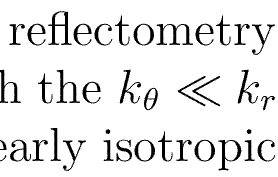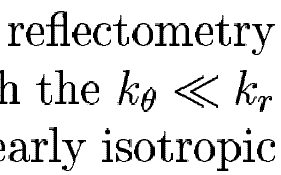CRYPTO 2005
Guidelines for Preparing
Electronic Submissions
| Main Page | Call for Papers | Contact Info | Program | Local Info | Registration | Rump Session | BoFs |
CRYPTO 2005Guidelines for Preparing
|
Electronic submissions to CRYPTO 2005 should preferably be in Portable Document Format (PDF), although PostScript (PS) will be allowed. If at all possible, the submission should be in US letter paper size (rather than A4), and should use Type 1 fonts (rather than Type 3 fonts).
This web page gives a few instructions and tips on preparing your submission document. On many platforms, it is fairly easy to prepare a document in a wide variety of formats, and then convert it to either PDF or PS. Most authors will be using LaTeX to prepare their submissions. While this approach is not strictly required, it is strongly recommended; moreover, papers accepted to the conference must be prepared using LaTeX (different instructions for preparing final versions of accepted papers will be sent to authors of accepted papers). The remainder of this web page deals only with LaTeX (and in fact, only with LaTeX 2e, the "modern" version of LaTeX), and is geared towards Unix and Unix-like platforms.

| 
|
| Type 1 fonts | Type 3 fonts |
Some PDF viewers deal with Type 3 fonts better than others, but it is better to simply avoid them in the first place. Unfortunately, some traditional methods of producing PDF files using LaTeX often yield PDF files with Type 3 fonts. However, most relatively modern distributions of LaTeX make it easy to produce PDF (and PS) with Type 1 fonts: sometimes the system defaults may be set up to do this automatically, and sometimes not. The instructions below should guarantee that you get Type 1 fonts, regardless of the default configuration.
\documentclass[11pt]{article}
\usepackage[letterpaper,hmargin=1in,vmargin=1.25in]{geometry}
You don't need to use any other commands to set the margins. If you want to adjust the margins on the sides, change the hmargin amount, and if you want to adjust the margins on top and bottom, change the vmargin amount. Larger margins may make the paper more readable, and should be used if they don't make your paper exceed the page limits (setting hmargin=1.5in,vmargin=1.75in would produce a more pleasant looking paper); smaller margins are not acceptable.
There are several common approaches to generating PDF files with LaTeX. Assume that your LaTeX file is paper.tex.
$ pdflatex paper
Now you have a file paper.pdf, and you are done! If you prepare the LaTeX file as described above, and follow these steps, the file paper.pdf will have 11 point, Type 1 fonts, reasonable margins, and US letter paper size.
If you use an integrated TeX development environment, such as MikTeX, WinEdt, or TexShop, these are (usually) configured to use pdflatex, and so if you use these tools, you should be in good shape.
Note: The use of the geometry package, as described above, should guarantee that the paper size is set correctly, even if your system happens to be configured to produce A4 paper size by default.
$ latex paper $ dvipdfm -p letter paper
The first command produces the file paper.dvi, and the second command converts paper.dvi to paper.pdf. If you prepare the LaTeX file as described above, and follow these steps, the file paper.pdf will have 11 point, Type 1 fonts, reasonable margins, and US letter paper size.
Note: The use of the geometry package by itself may not ensure that the paper size is right. The option "-p letter" to dvipdfm will do the job.
$ latex paper $ dvips -t letterSize -Ppdf -G0 paper $ ps2pdf -sPAPERSIZE=letter paper.ps
The first command produces the file paper.dvi, the second converts paper.dvi to paper.ps, and the third converts paper.ps to paper.pdf. If you prepare the LaTeX file as described above, and follow these steps, the file paper.pdf will have 11 point, Type 1 fonts, reasonable margins, and US letter paper size.
Notes:
- The "-Ppdf" option to dvips ensures that we get Type 1 fonts; the "-G0" option works around a bug in some older versions of dvips that can mess up "ligatures" (i.e., double letters, like "ff").
- On some older LaTeX installations, you may have to invoke dvips as follows:
$ dvips -t letterSize -o -Pcmz -Pamz -G0 paper- It is generally better to invoke dvips with "-t letterSize", rather than "-t letter", as some A4 printers may refuse to print PS files created with the latter option. However, when this is done, we have to tell ps2pdf the paper size again.
- The use of the geometry package as described above is not enough to ensure correct paper size.
- To get Type 1 fonts, you need version 6 of GhostScript, or above. Check this information with
$ gs --version- Some folks recommend passing the following additional arguments to ps2pdf:
-dSubsetFonts=true -dEmbedAllFonts=true -dMaxSubsetPct=100 -dCompatibilityLevel=1.3However, in most situations, these don't seem to be necessary: the default settings are usually OK.
You can also get information about your PDF file from the command line (assuming the appropriate commands are installed):
$ pdfinfo paper.pdfprints general information, including paper size, and
$ pdffonts paper.pdfprints detailed font information.
If you open your PS file using gv, the paper size information should be clearly displayed. Font information is not so readily available.
This is a rather complicated and messy issue. However, here is a crash course that shows you a few simple, yet powerful, techniques for including graphics (such as those produced by xfig) in your document. These techniques should work as described on most systems, but may require a bit of fiddling on others.
First, insert the following line in the preamble of your LaTeX file:
\usepackage{graphicx,epsfig,color}
If you use pdflatex (Method 1):
\includegraphics{foo}
Note that this command
will look for the file foo.pdf when running pdflatex.
You can conveniently scale and rotate your graphic
using this command as well; e.g.,
\includegraphics[scale=0.5,angle=45]{foo}
scales the image by a factor of 0.5, and rotates it counter-clockwise
45 degrees.
$ epstopdf foo.eps > foo.pdfand then proceeding as above.
To do this within xfig, select the text tool, and look for the appropriate menus; this can also be done automatically by adding the following lines to your .Xdefaults (or .Xresources) file:Fig.latexfonts: true Fig.specialtext: trueWhen you do this, run$ xrdb -load ~/.Xdefaultsto make this take affect the next time you start xfig.
Now, when you are ready, export your figure, selecting the "Combined PDF/LaTeX" format. If you choose the file name foo.pdf, then xfig creates two files: foo.pdf and foo.pdf_t. In your LaTeX file, simply include the command
\input foo.pdf_twherever you want your graphic to appear.
Notes:
- If your xfig file is foo.fig, do not use the default output file name of foo.pdftex, as pdflatex will not be happy with this; rather, explicitly choose foo.pdf as the output file name. This is apparently a bug in either xfig or pdflatex.
- Sometimes xfig creates PDF files that are oriented incorrectly (rotated 90 degrees). This is also apparently a bug, and can be corrected by switching xfig's "view" from portrait to landscape (or vice versa) before exporting to PDF.
If you use latex (Methods 2 or 3):
\includegraphics{foo}
Note that this command will look for the file foo.eps when running latex.
\input foo.eps_twherever you want your graphic to appear.
If you are on MAC OSX, a great alternative to xfig is to use the OmniGraffle application (bundled with v10.3 of OSX), combined with a tool such as LaTeX Equation Editor or TexShop (available for free on the web). You can compose your diagram in OmniGraffle, and drag and drop PDFs from LaTeX Equation Editor or TexShop right into OmniGraffle. Then simply export from OmniGraffle, either as EPS or PDF, and import this into your LaTeX as above, using \includegrahpics.
If you use LaTeX Equation Editor and export from OmniGraffle directly to PDF, due to some GhostScript/Apple/Adobe compatability bug, you might want to use GhostScript version 6, rather than version 8; otherwise, you may get PDF files that do not print correctly from Adobe Acrobat. Fink users: sudo apt-get install ghostscript6. Alternatively, export from OmniGraffle to EPS, or use TexShop (which uses pdflatex, rather than GhostScript).
This should not happen if you follow the steps outlined above and you have a fairly modern and complete LaTeX installation, and a fairly modern GhostScript implementation (if using Method 3 for generating PDF).
As already mentioned above, if you use Method 3 for generating PDF, the problem will arise if you have a GhostScript version older than version 6. The solution: upgrade GhostScript, or use Methods 1 or 2, rather than Method 3.
The problem may arise if you use Computer Modern fonts (this is the LaTeX default), and your installation of LaTeX does not have Type 1 versions of these fonts installed. Short of upgrading to a newer version of LaTeX (or borrowing one from a friend), one work-around is to try using Times Roman font; however, the trick is to get your math typeset in Times Roman as well. Try adding on of the following lines to your LaTeX file:
\usepackage{txfonts}
\usepackage{times,mathptm}
\usepackage{times,mathtimes}
Note that if you have this problem your PS files will also have Type 3 fonts (if you convert your PS to PDF via ps2pdf, you will see the fuzz).
Although A4 paper size is not acceptable for CRYPTO 2005 submissions, just for completeness (and fairness), here are the changes to the above instructions necessary to force A4 paper size.
Note "-t A4size" is preferred to "-t a4" for the same reason that "-t letterSize" is preferred to "-t letter".